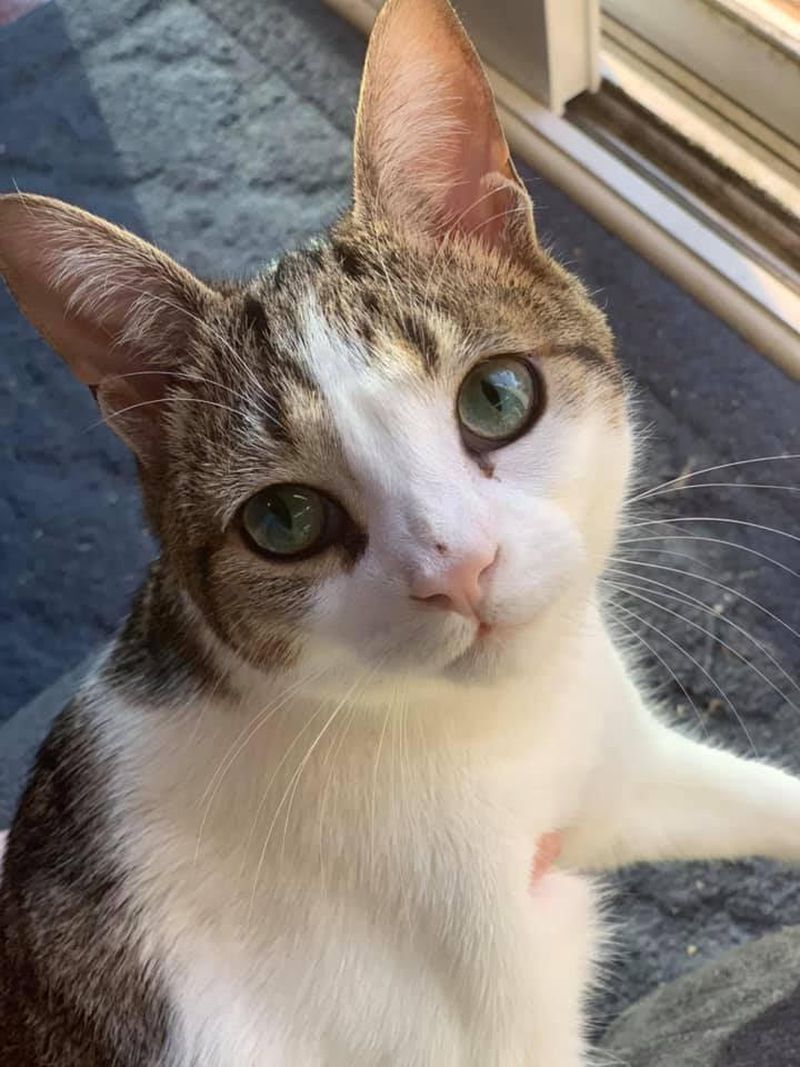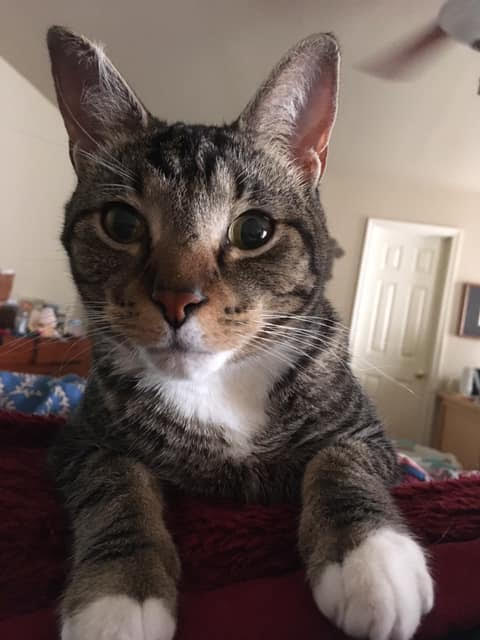
Opening Your Heart and Home to Special Needs Cats
At home, Chessie is known as “The Ambassador” for her habit of greeting foster kittens once they’re cleared for socialization. Tyr, also known as “Little Loaf,” prefers to be snuggled and carried around the house.
Despite their different personalities, Chessie and Tyr are the very best of friends. This affectionate duo loves to play and wrestle with each other—on their side so they don’t fall over. This is because Chessie and Tyr are special kitties with a condition called Cerebellar Hypoplasia (CH).
What Is Cerebellar Hypoplasia?
Cerebellar Hypoplasia is a developmental condition in which the cerebellum (the part of the brain that controls fine motor skills, coordination and balance) doesn’t develop properly. The condition affects cats from birth, and it’s the result of mom being infected with feline panleukopenia virus. CH is diagnosed through an MRI and presents by 10 months of age.
What Are CH Symptoms?
It’s known as “Wobbly Cat Syndrome” for a reason! CH cats can be classified as mild, moderate or severe, with symptoms ranging from shaky walking and head tremors to more intense tremors or difficulty walking.
Can CH Be Treated or Cured?
No. While it sounds scary, CH is not painful for afflicted kittens and cats, who are born with the condition. CH doesn’t affect a cat’s lifespan nor does it get worse with time. CH cats should be on a regular vaccination schedule and should be spayed and neutered. Because CH is neurological, the condition would be passed on to their litter.
Cats are resilient animals that can adapt to most challenges that life throws at them. Living with CH is no exception—CH cats don’t know they’re any different than “normal” cats, so their condition doesn’t bother them. If these kitties have trouble walking, they might prefer to flop around instead of step. If they can’t jump, they’ll climb. And, much like Chessie and Tyr, if they want to play, they might roll onto their sides instead of standing up.

As their adopter Stephanie explains, “All animals have value, and CH cats have unique, loving personalities. Chessie and Tyr both seem more playful than our other cats, and their antics are funny and adorable.”
Of course, it is worth remembering that some special needs cats, including those with CH, may require a little extra care. Stephanie continues, “They are a bit more work. For example, Tyr gets a bath on average once a week, but sometimes twice in one day. We also had to put clear plastic guarding on our upstairs railing to make sure they didn’t fall because Tyr, in particular, doesn’t seem to know he falls easily and was being a risky teenager.”
We are incredibly grateful to Stephanie for choosing to save two very special lives! As an open admission shelter, BARCS sees animals of all conditions come in through our door, and we know firsthand how difficult it can be for special needs pets to find their forever homes.
Why You Should Consider Adopting a Special Needs Animal
All animals are worthy of love—and that absolutely includes CH kitties. The next time you are thinking about adoption, consider opening your home to an animal who may be overlooked simply because they’re different. Special needs animals will give you unconditional love in return for food, love and a warm place to sleep.
If you’re not able to adopt, please donate today to our medical care fund to help us give second chances to more special needs animals like Chessie and Tyr.


